-
Posts
5,808 -
Joined
-
Last visited
Profile Information
-
Gender
Male
-
Location:
Southern Indiana
-
Interests:
Finding old coins & native precious metals, researching history
-
Gear In Use:
Minelab Manticore, Minelab Eqx800, Fisher F75 Black, White's TDI/SPP, White's TRX, Garrett Carrot, Sunray Pro Gold
Recent Profile Visitors
GB_Amateur's Achievements

Platinum Contributor (6/6)
10k
Reputation
-
I have the MS-2 wired (1/4" plug) headphones and your experience more/less matches mine. Now in their defense, these are inexpensive (at least two sellers on Ebay have them, new with free shipping, for $25.49) so we shouldn't expect them to perform as well as >$100 headphones. Are the speakers on the MS-2 and MS-3 the same? That I don't know. When I've used the Z-Lynk transmitter+receiver with my higher quality headphones (e.g. Sunray Pro Golds) I got good performance so IMO that part of the system has high quality performance.
-
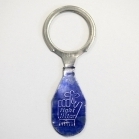
Relic Roundup July 22, 2024: Garrett's Steve Moore
GB_Amateur replied to IBMe's topic in Garrett Vortex Forum
Forward to 18:00 to skip the irrelevant small talk, typical of these blog-videos. -
(Maybe this question has been answered previously in other threads.) For native gold detecting, has it been shown that the Eqx 900 is better than the 800? There should be good deals on used 800's, not the least reason being the Manticore.
- 10 replies
-
- 3
-

-
- minelab equinox
- minelab gold monster
-
(and 1 more)
Tagged with:
-
I just searched there entering "metal detector coil" and quite a few came up, along with mostly full detectors. Many pages of results occurred, although I don't know how relevant all those were. If you have a specific detector you want a coil for, that would probably limit the the 'false signals' if you included it in the search.
-

Manticore and Deep Silver Update
GB_Amateur replied to Jeff McClendon's topic in Metal Detecting For Coins & Relics
This is revealing. I'm going to concentrate on it in my own detecting. My experience is far less than yours so honing in on such (what I consider) subtleties is likely going to be a learning process. But I'm certainly not afraid of those. Thanks for that tip!- 18 replies
-
- 1
-

-
- manticore
- coin found
-
(and 1 more)
Tagged with:
-

Manticore and Deep Silver Update
GB_Amateur replied to Jeff McClendon's topic in Metal Detecting For Coins & Relics
I still haven't gone above sensitivity 22 -- trying to learn to walk before I try to run. I've previously erred on the side of high accuracy VDI numbers, which seem to peak in my test stand around 17-18. However, as depth increases VDI's drift higher at those sensitivity levels, so if depth is what matters (and for sure it does in heavily hunted sites, along with separation when trashy) then it seems your suggestion of upping the gain may be a no lose proposition.- 18 replies
-
- 3
-

-
- manticore
- coin found
-
(and 1 more)
Tagged with:
-

Manticore and Deep Silver Update
GB_Amateur replied to Jeff McClendon's topic in Metal Detecting For Coins & Relics
Jeff, I don't think Minelab could get a better advertisement for the Manticore in mineralized ground for coin detecting than your posts. You've certainly given me incentive to revisit some of my 'hunted out' sites. Now if the weather would just cooperate. 🙏- 18 replies
-
- 4
-

-
- manticore
- coin found
-
(and 1 more)
Tagged with:
-
I think we're conditioned to be skeptical of lost treasure stories, in no small part because so many over the years have been pure fiction, but presented as otherwise. Speaking of the Lost Dutchman Mine, there was recently a History's Greatest Mysteries episode on History Channel about it. It was a good review, IMO, of the story's checkered history. Like most that are based upon some truth, it can be tough to filter through all the pieces, figuring what is likely reliable and what could be fabricated. The easy route is to "throw the baby out with the bathwater", and that seems to be the action many readers/viewers take. The Victorio Peak Treasure is even a more difficult one to come to grips with, IMO. There are so many rumored connections to the Army' activities and motives as well as the Federal Government claims (Nixon administration involvement). Doc Noss's questionable integrity is another big monkey wrench tossed into the gears.
-
Sounds like you have a good story worth writing up, but since we've lost the treasure magazines most of us grew up really looking forward to devouring each month, I don't know where that would be.
-
For starters, his attempt to tie his great grandfather's gold to the Saddle Ridge Hoard doesn't add confidence in his credibility. Jackson is ESE of Sacramento. According to the Wikipedia article I just linked the Saddle Ridge Hoard was found in the Shasta Cascade Region -- significantly North of Sacramento (an hour's drive to its southern border). There are more issues with this claim, particularly its size (in face value), but let's leave it at that. The more one has to twist a story, particularly settling on lies, the harder it gets to accept. Hoards are really tough and research is probably more important for this form of treasure hunting than any other. Did the hoard exist? If so, has it already been recovered? If not, is it even in a recoverable location? The list of 'gotchas' is considerably longer than this. If someone is going to take this tale and have even a slim chance of success, s/he is going to need to do a lot more objective research than this person has presented.
-

Have You Thought About Your Detector's Battery?
GB_Amateur replied to snakejim's topic in Metal Detector Advice & Comparisons
Thanks for that long, detailed treatise, Hugh. It's exactly what I was hoping for, and why I asked you for it! -

Have You Thought About Your Detector's Battery?
GB_Amateur replied to snakejim's topic in Metal Detector Advice & Comparisons
First question: can you elaborate on the importance of the "50% charge (in) storage"? Second question: what if your device doesn't show the battery charge? I ask these because I had a device with Li battery which went bad (as in will no longer hold a charge) and its age was more like 5 years. I had only used it one or two dozen times, then onto the shelf. When I finally needed it, the performance failed. It's certainly possible I didn't store it with enough charge. There was no problem with temps, humidity, sunlight, etc. as far a storage is concerned. -

Wireless Headphone Option For Newer Minelabs
GB_Amateur replied to UT Dave's topic in Minelab Manticore Forum
Killer Bees are typically of high quality. The only potential downside/weakness I see (and I could be missing something) is that they don't have independent volume adjustment, at least they don't say such in the description. That might be a detriment for those with (more) hearing loss in one ear compared to the other. Price isn't cheap, but if you add the price of a wireless module plus other high quality headphones, it's more/less on par. -

Keeping The Silver Coming Anyway (shrug)
GB_Amateur replied to F350Platinum's topic in Metal Detecting For Jewelry
Apparently it isn't so good around salt water. (See here.) Here's an alternative. If it were me I'd try cutting and drilling this before paying $50 for perforated PVC. You can also get 1/8" thickness (12"x12") at Amazon for about the same price.- 30 replies
-
- 1
-

-
- coin found
- jewelry found
-
(and 1 more)
Tagged with:
-
Screen protectors for electronics (cellphones, pad computers, laptops) work really well. Here is an (affordable) example but there are many choices. Just cut to size, peal off the protective layer (on both!) and you're good for hundreds of hours. They also are very good at anti-reflection, much better than those provided with the Equinox.



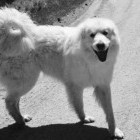
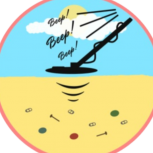
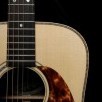
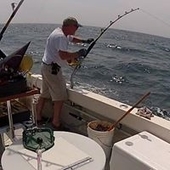
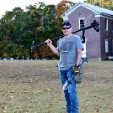

(1).thumb.png.8e7a6cc7820a86cd4539952816693441.png)



